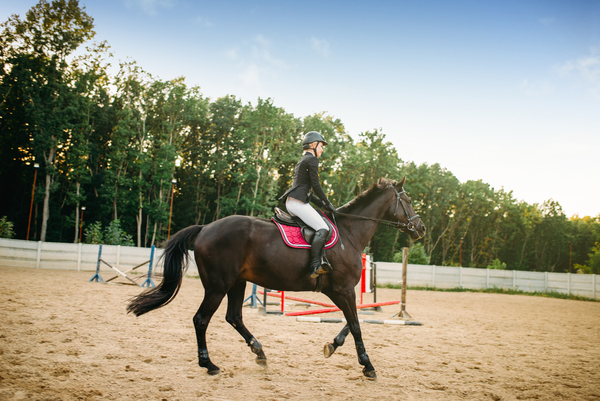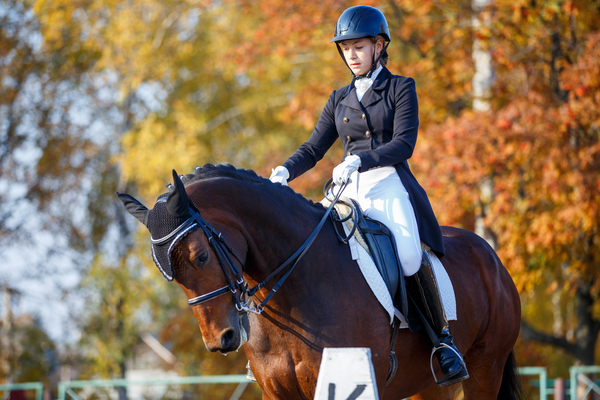General concepts and overview of horse racing

Equestrian discipline is a formal concept of sport that includes different types of riding and horseback riding. While riding, the rider becomes one with the horse. The control of the stallion is not only the movement of the reins for which the rider is holding.
The process occurs with the help of the weight of the rider, the movement of his legs, and sometimes the power of the voice and timbre.
The historical animal was first tamed in the Scandinavian countries in the 3rd-4th century BC. The skill brought great relief to the lives of the tribes. In Europe, the horse domesticated around the 2nd or 3rd century BC. At that time, this is the best means of transportation used in the agricultural direction.
The stallion was of great use in battle. Soon there was competition for the best horse from this and the first competitions – horse racing and disciplines betting. In Egypt, chariot competitions began to gain popularity. In 680 BC, the sport was included in the program of the first Olympic Games. Horse racing was added in 1648 BC.
In modern times, new breeds of animals began to be developed experimentally, in which the main advantage was strength and endurance. Farms for breeding elite horse breeds immediately settled down. After a long break, equestrianism appeared for the first time at the revived Olympic Games.
It is presented in the form of an obstacle course, height and length. The next debut took place in 1912, where triathlon was added.
France’s greatest contribution to the discipline of sport is the creation of the world’s first riding school. Its graduates have received worldwide recognition. In this small country, there are 250 operating hippodromes, which have their own historical beginning.
It was the French who gave the world the famous animal breeds French trotter and French sel. The first breed was finally formed in the 20th century. Its characteristic difference is a harmonious physique and endurance. This is achieved by complex workouts that were invented in the 18th century. In training, complex paths with descents, ascents and sharp turns are used.
Variety of equestrian sports
After the appearance and spread of disciplines around the world, an association for the settlement of horse racing appeared. In 1923, an equestrian federation was founded in Switzerland, which recognized 7 official types of horse racing.
- Dressage. Higher riding school, an Olympic sport, a kind of defile.
- Jumping. A popular equestrian discipline that involves overcoming obstacles in a certain order.
- Eventing. The Combined Competition consists of Dressage, Cross Country, Cross Country and Show Jumping.
- Driving. Sledding speed competition.
- Reining. Competitions in which the jockey performs various tricks: turns, running circles.
- Distance horse races.
- Voltazherovka. Performing gymnastic and acrobatic elements that travel around the arena.
In addition to the documented ones, there are amateur types of horse racing that are supported by local organizations. For example: horse polo, mud racing, ladies riding and more.
The first equestrian competitions

Starting from the fifth Olympiad in Stockholm, a decision was made to include equestrian sports in all summer Olympic games. Equestrian discipline began to gain popularity around the world and athletes from 9 countries around the world were represented at the competitions: Great Britain, Belgium, Germany, Denmark, Norway, USA, France, Chile, Sweden. Swedish participants became winners in all categories and took gold, silver and bronze.
This was a turning point when the sport began to be developed from everywhere to show the best results.
In addition to the Olympic Games, there are many other competitions around the world. There are World Equestrian Games, first held in 1990 with the support of Prince Philip. Held every 4 years.
World Cup – held with the support of the International Equestrian Federation
Initially, the idea involved show jumping competitions, which took place in 1978. Since that time, the following types have been added to the World Cup: dressage, driving, voltage. In addition to world cups, there are continental competitions and regional championships.
Mainly held in four categories like m in the world cup. All competitions are supervised by the Equestrian Federation.
No matter how popular the sport is, it also lends itself to criticism. Many animal advocates oppose such events. Real sport is records that are set with the blood and sweat of personal achievements. And equestrian discipline is the use of the possibilities of another creature. Sometimes, from birth, animals are forced into sports with the help of beatings.
So it was in the last century, but now equestrian sport is much different from the past. In the modern world, the safety of the stallion and jockey comes first. Moreover, every year such a sport as expensive wine, the older, the more expensive and valuable.